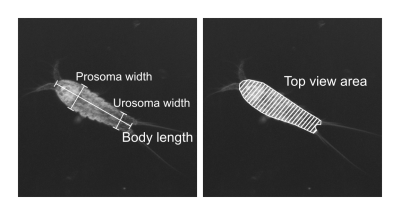Two dynamic energy budget models for the harpacticoid copepod Nitocra spinipes

Scientific abstract
The harpacticoid copepod Nitocra spinipes is a commonly used test species in ecotoxicological studies and subject of multiple international testing guidelines. Striving for a better understanding of toxicant-induced effects in this species, here we apply the Dynamic Energy Budget (DEB) theory. In previous approaches to capture the copepod life history in a DEB model, diverging assumptions on the growth pattern of copepods were made. While some authors presumed von Bertalanffy growth, others presumed an upcurving in length versus time due to metabolic acceleration. In this study we parametrized the two typified DEB models "abp" (metabolic acceleration from birth to puberty) and "sbp" (standard von Bertalanffy growth from birth to puberty) on life history data of N. spinipes. Besides using data from the literature, we also measured additional length-at-time data to aid the parameter estimation. As the body proportions of N. spinipes changed continuously throughout its development we used the square root of the top view area as a length measure to scale with the cube root of structural volume in length-to-volume conversions. Experimental data were predicted well with both models according to goodness of fit criteria. Despite a slightly better data fit in abp, we cannot rule out sbp as implausible. Overall, we expect both models to perform equally well in most applications. More detailed data on N. spinipes and closely related species are needed to support or reject the presumption of metabolic acceleration in the life history of copepods.
Full reference (link):
Koch, J., De Schamphelaere, K.A.C. (2018). Two dynamic energy budget models for the harpacticoid copepod Nitocra spinipes. Seares(2018), Volume 143, Pages 70-77. doi:10.1016/j.seares.2018.02.003

